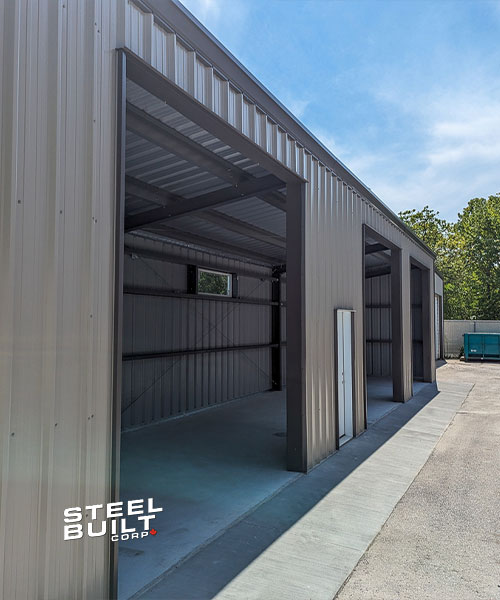
Ag Buildings Essential Structures for Modern Farming
Introduction:
Agricultural buildings, or ag buildings, are essential structures in the farming industry, providing the necessary space and environment for housing livestock, storing crops, and protecting equipment. As the agricultural sector continues to advance, so too does the design and functionality of these buildings. Modern ag buildings are now characterized by their durability, efficiency, and adaptability, incorporating cutting-edge technologies to meet the evolving needs of farmers. This article explores the innovations, benefits, and future trends of agricultural buildings, highlighting their crucial role in contemporary farming practices.
Innovative Design and Materials:
Today’s agricultural buildings are a far cry from the traditional barns and storage sheds of the past. Modern ag buildings are designed with a focus on efficiency and sustainability, utilizing advanced materials like steel and engineered wood. Steel buildings, in particular, are becoming increasingly popular due to their strength, durability, and low maintenance requirements. These materials not only ensure longevity but also provide resistance to pests, fire, and extreme weather conditions, making them ideal for various agricultural applications.
Efficiency and Sustainability:
Efficiency is a key consideration in the design of modern agricultural buildings. Energy-efficient designs, incorporating elements such as insulated panels, natural ventilation systems, and energy-efficient lighting, help reduce operational costs and environmental impact. Many new ag buildings are also designed to accommodate renewable energy sources, such as solar panels, further enhancing their sustainability.
Water conservation is another critical aspect of modern agricultural building design. Innovative systems for rainwater harvesting and efficient irrigation are increasingly integrated into these structures, ensuring that water usage is optimized and waste is minimized. These sustainable practices not only benefit the environment but also contribute to the long-term viability and profitability of farming operations.
Adaptability and Customization:
Modern ag buildings are highly adaptable, catering to the diverse needs of different farming operations. Whether it’s a livestock barn, a grain storage facility, or a greenhouse, these structures can be customized to meet specific requirements. Modular design allows for easy expansion and modification, enabling farmers to scale their operations as needed.
Advanced ventilation and climate control systems are essential features in livestock buildings, ensuring optimal living conditions for animals. These systems help maintain the right temperature and humidity levels, reducing stress and improving animal health and productivity. For crop storage, modern ag buildings are equipped with sophisticated temperature and humidity control systems to preserve the quality of harvested produce and extend its shelf life.
Technology Integration:
The integration of technology in agricultural buildings has revolutionized the farming industry. Smart farming technologies, such as automated feeding and watering systems, remote monitoring, and IoT (Internet of Things) devices, enhance the efficiency and productivity of farming operations. These technologies allow farmers to monitor conditions in real-time, make data-driven decisions, and automate routine tasks, freeing up time for other essential activities.
For example, precision farming tools can be integrated into greenhouses to monitor soil moisture levels, nutrient content, and plant health. Automated ventilation and lighting systems can be adjusted based on real-time data, ensuring optimal growing conditions and maximizing crop yields. In livestock buildings, automated feeding and milking systems improve efficiency and animal welfare, reducing labor costs and increasing production.
Applications Across the Agricultural Sector:
Agricultural buildings serve a wide range of applications within the farming sector. Livestock barns provide safe and comfortable housing for animals, ensuring their health and productivity. Crop storage facilities protect harvested produce from spoilage and pests, maintaining its quality until it reaches the market. Machinery and equipment sheds safeguard valuable farming tools and vehicles from the elements, prolonging their lifespan and reducing maintenance costs.
Greenhouses are another critical application of modern ag buildings, enabling year-round cultivation of crops in controlled environments. These structures can be equipped with advanced climate control systems, hydroponic or aquaponic systems, and automated lighting to optimize growing conditions and increase crop yields. As urban farming gains popularity, innovative vertical farming structures are also being developed to maximize space and resource efficiency in urban environments.
Future Trends:
The future of agricultural buildings looks promising, with ongoing advancements in materials, technology, and design driving innovation in the sector. Sustainable building practices will continue to gain importance, with an increased focus on energy efficiency, renewable energy integration, and resource conservation. Smart farming technologies will become more sophisticated and accessible, further enhancing the productivity and efficiency of farming operations.
Vertical farming and urban agriculture are emerging trends that will shape the future of agricultural buildings. As cities grow and arable land becomes scarcer, innovative solutions like vertical farms and rooftop greenhouses will provide sustainable ways to produce food locally. These structures will incorporate cutting-edge technologies to optimize growing conditions and maximize space utilization, contributing to food security and sustainability in urban areas.
Conclusion:
Agricultural buildings are undergoing a significant transformation, driven by the need for efficiency, sustainability, and technological integration in modern farming. These structures play a crucial role in supporting the diverse needs of the agricultural sector, from livestock housing and crop storage to machinery protection and controlled-environment farming. As the industry continues to evolve, innovative design and advanced technologies will ensure that agricultural buildings remain vital components of successful farming operations, contributing to the sustainability and resilience of the global food system. for blog to visit site godsmaterial.





Leave Your Comment